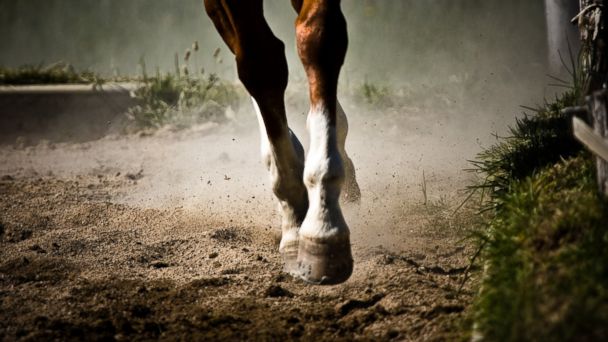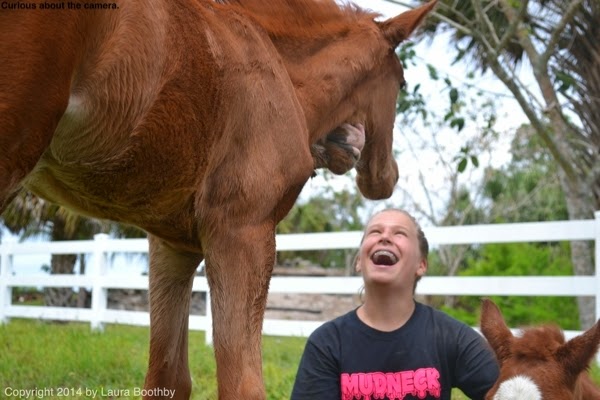Federal protection sought for wild horses in West
RENO, Nev. (AP) — Despite overall numbers in the tens of thousands, mustang advocates say the wild horse is on the verge of going extinct in North America for the second time in 13,000 years and deserves protection under the Endangered Species Act alongside grizzly bears, the desert tortoise and humpback whales.
Efforts to halt mustang roundups in Congress and the courts have been unsuccessful over the past decade, but two groups in a petition to the U.S. Fish and Wildlife service are focusing on genetics and research they say prove the horses are a native species. They say growing threats from development, livestock grazing and government gathers are jeopardizing the genetic viability of individual herds in 10 states from California to Montana.
"Nothing else is working. This is a different avenue," said Michael Harris, a lawyer for Friends of Animals, a nonprofit animal rights group that filed the petition with the Colorado-based horse group, The Cloud Foundation.
The petition states mustang habitat has shrunk 40 percent since President Richard Nixon signed the Free Roaming Wild Horse and Burro Act into law in 1971. It advances an argument that the Bureau of Land Management long has rejected — that the wild horse is a native species that only temporarily went extinct on the continent 11,000 to 13,000 years ago before Spanish conquistadors reintroduced it to North America in the 1500s.
The call for protection comes as BLM insists the public rangeland — much of it in the throes of drought — is being degraded by an overpopulation of nearly 50,000 horses and burros, about half of them in Nevada.
The petition accuses the agency of undermining U.S. law protecting mustangs by abusing its authority to order roundups based on a determination that the herds are in "excess" to further the agency's interest in minimizing competition with wildlife, cattle and sheep.
While BLM estimates 49,208 horses and burros are on the range, the petition says none of the isolated herds number anywhere near the 2,500 most biologists consider necessary to keep a distinct species viable. About three-fourths have fewer than 150 horses, it said.
Harris, legal director of the wildlife program at Friends of Animals, admits it may be tough to sell the public on the idea the mustangs are endangered given there are thousands in Nevada alone.
"But I don't think it will be a hard sell at all to the biologists at the Fish and Wildlife Service who examine the question of genetic viability over and over when it comes to endangered species," he told The Associated Press on Friday.
The Nevada Cattlemen's Association and the Public Lands Council are among those arguing the petition is invalid because the horses aren't native to North America. They say protection afforded mustangs under the Wild Horse and Burro Act is undercut by BLM's failure to keep herd sizes in check.
"The federal government is buckling to pressures from the misguided special interest groups that don't want to see 'wild' horses brought off the range," said Dustin Van Liew, executive director of the council tied to the National Cattlemen's Beef Association. "Listing wild horses under the ESA — which is meant for wildlife, not domesticated, non-native animals — would only serve as another demonstration of just how damaging that statute is."
BLM spokeswoman Celia Boddington said Friday that the agency hasn't changed its longstanding position that today's American wild horses are not "native."
"American wild horses are descended from domestic horses, some of which were brought over by European explorers in the late 15th and 16th centuries, plus others that were released or escaped captivity in modern times," BLM's web site states.
The petition filed June 11 points to recent research concluding that the modern horse — genus Equus — originated in North America 3 million to 4 million years ago, spread to Eurasia by crossing the Bering land bridge 2 to 3 million years ago and became extinct in North America no longer than 13,000 years ago.
It cites the work of Jay F. Kirkpatrick, a leader in horse reproduction research who directs ZooMontana's Science and Conservation Center in Billings, Montana.
"It is native to North America," Kirkpatrick said. "The Spanish were bringing them home."
Efforts to halt mustang roundups in Congress and the courts have been unsuccessful over the past decade, but two groups in a petition to the U.S. Fish and Wildlife service are focusing on genetics and research they say prove the horses are a native species. They say growing threats from development, livestock grazing and government gathers are jeopardizing the genetic viability of individual herds in 10 states from California to Montana.
"Nothing else is working. This is a different avenue," said Michael Harris, a lawyer for Friends of Animals, a nonprofit animal rights group that filed the petition with the Colorado-based horse group, The Cloud Foundation.
The petition states mustang habitat has shrunk 40 percent since President Richard Nixon signed the Free Roaming Wild Horse and Burro Act into law in 1971. It advances an argument that the Bureau of Land Management long has rejected — that the wild horse is a native species that only temporarily went extinct on the continent 11,000 to 13,000 years ago before Spanish conquistadors reintroduced it to North America in the 1500s.
The call for protection comes as BLM insists the public rangeland — much of it in the throes of drought — is being degraded by an overpopulation of nearly 50,000 horses and burros, about half of them in Nevada.
The petition accuses the agency of undermining U.S. law protecting mustangs by abusing its authority to order roundups based on a determination that the herds are in "excess" to further the agency's interest in minimizing competition with wildlife, cattle and sheep.
While BLM estimates 49,208 horses and burros are on the range, the petition says none of the isolated herds number anywhere near the 2,500 most biologists consider necessary to keep a distinct species viable. About three-fourths have fewer than 150 horses, it said.
Harris, legal director of the wildlife program at Friends of Animals, admits it may be tough to sell the public on the idea the mustangs are endangered given there are thousands in Nevada alone.
"But I don't think it will be a hard sell at all to the biologists at the Fish and Wildlife Service who examine the question of genetic viability over and over when it comes to endangered species," he told The Associated Press on Friday.
The Nevada Cattlemen's Association and the Public Lands Council are among those arguing the petition is invalid because the horses aren't native to North America. They say protection afforded mustangs under the Wild Horse and Burro Act is undercut by BLM's failure to keep herd sizes in check.
"The federal government is buckling to pressures from the misguided special interest groups that don't want to see 'wild' horses brought off the range," said Dustin Van Liew, executive director of the council tied to the National Cattlemen's Beef Association. "Listing wild horses under the ESA — which is meant for wildlife, not domesticated, non-native animals — would only serve as another demonstration of just how damaging that statute is."
BLM spokeswoman Celia Boddington said Friday that the agency hasn't changed its longstanding position that today's American wild horses are not "native."
"American wild horses are descended from domestic horses, some of which were brought over by European explorers in the late 15th and 16th centuries, plus others that were released or escaped captivity in modern times," BLM's web site states.
The petition filed June 11 points to recent research concluding that the modern horse — genus Equus — originated in North America 3 million to 4 million years ago, spread to Eurasia by crossing the Bering land bridge 2 to 3 million years ago and became extinct in North America no longer than 13,000 years ago.
It cites the work of Jay F. Kirkpatrick, a leader in horse reproduction research who directs ZooMontana's Science and Conservation Center in Billings, Montana.
"It is native to North America," Kirkpatrick said. "The Spanish were bringing them home."








 Barn workers are paid to keep stalls clean and horses fed and turned out. Yet without much fanfare, boarding barn workers often do much more. Even so, owners sometimes ignore their own roles in helping barn staff help their horses.
Barn workers are paid to keep stalls clean and horses fed and turned out. Yet without much fanfare, boarding barn workers often do much more. Even so, owners sometimes ignore their own roles in helping barn staff help their horses. Take our advice. Barn workers may suggest changing the location of a horse's paddock or exchanging one pasture buddy for another. Waldron says the changes are always made to benefit the horse, and owners should should take the advice of barn staff in matters such as these.
Take our advice. Barn workers may suggest changing the location of a horse's paddock or exchanging one pasture buddy for another. Waldron says the changes are always made to benefit the horse, and owners should should take the advice of barn staff in matters such as these.






